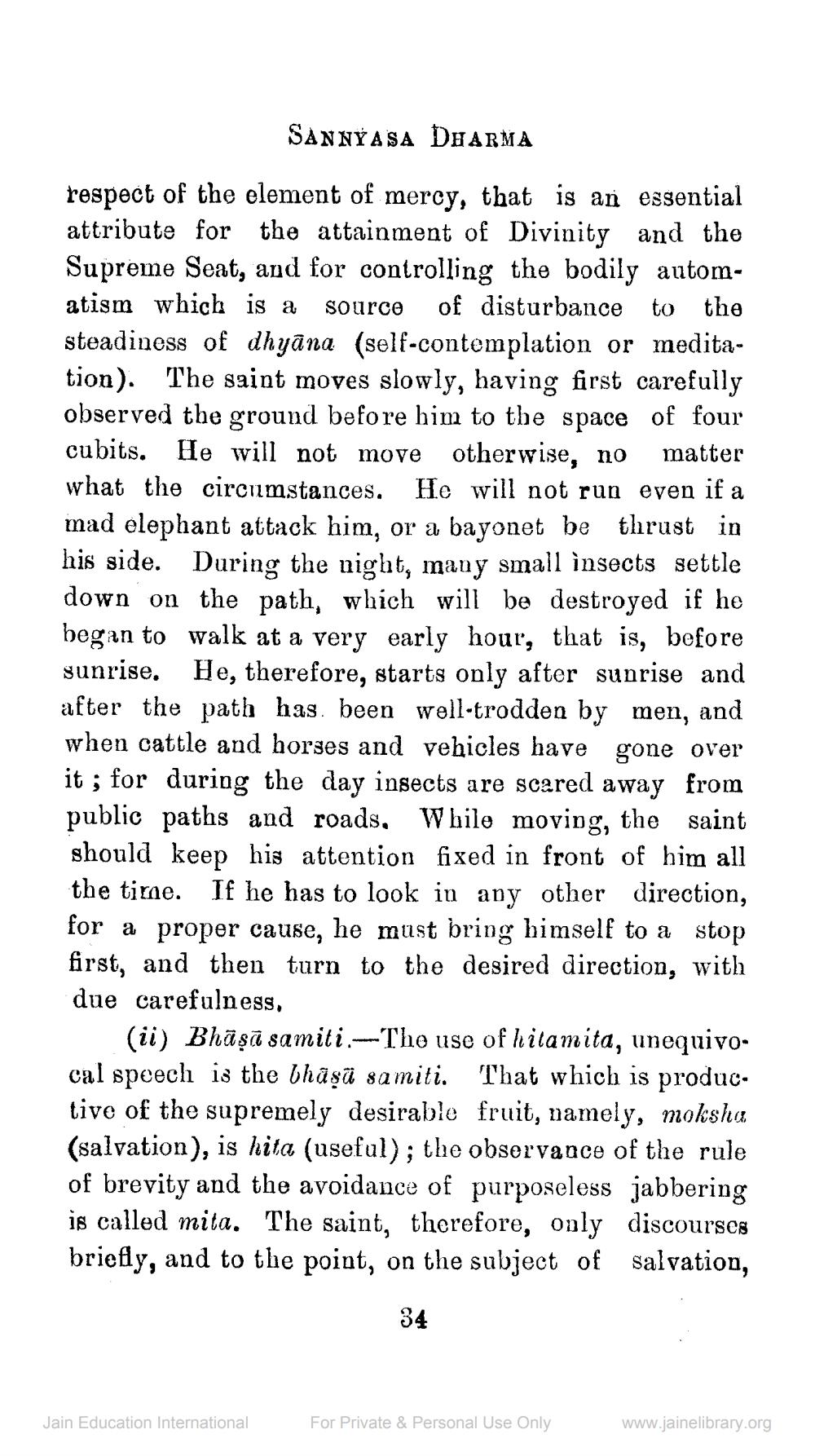________________
SANNYASA DHARMA
respect of the element of mercy, that is an essential attribute for the attainment of Divinity and the Supreme Seat, and for controlling the bodily automatism which is a source of disturbance to the steadiness of dhyāna (self-contemplation or meditation). The saint moves slowly, having first carefully observed the ground before him to the space of four cubits. He will not move otherwise, no matter what the circumstances. He will not run even if a mad elephant attack him, or a bayonet be thrust in his side. During the night, many small insects settle down on the path, which will be destroyed if he began to walk at a very early hour, that is, before sunrise. He, therefore, starts only after sunrise and after the path has been well-trodden by men, and when cattle and horses and vehicles have gone over it ; for during the day insects are scared away from public paths and roadsWhile moving, the saint should keep his attention fixed in front of him all the time. If he has to look in any other direction, for a proper cause, he must bring himself to a stop first, and then turn to the desired direction, with due carefulness.
(ii) Bhāṣā samiti.--The use of hilamita, unequivocal speech is the bhūsu samiti. That which is productive of the supremely desirable fruit, namely, moksha (salvation), is hita (useful); the observance of the rule of brevity and the avoidance of purposeless jabbering is called mita. The saint, therefore, only discourses briefly, and to the point, on the subject of salvation,
34
Jain Education International
For Private & Personal Use Only
www.jainelibrary.org




